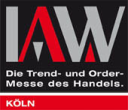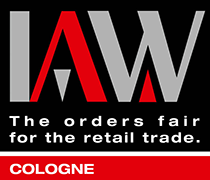Product range design in retail
Sayings such as ‘the customer is king’ or ‘the market is determined by supply and demand’ are part of a business economist’s standard repertoire. If you offer a product that customers like and that is in high demand, you can look forward to the desired turnover. So far so simple. Every retailer therefore sees it as their responsibility to provide a selection of different products that meet the customer’s requirements. Before active assortment policies can be pursued, it is necessary to determine how an assortment is defined. Assortment design is one of the most important tasks of marketing & shop positioning. This is where decisions are made as to which products a company offers, will offer in the future or should withdraw from the market. The possible measures for product range policy are correspondingly extensive. These diverse instruments are explained here using a specific example. This will give you the perfect overview of diversification, product elimination and product range depth.
How is an assortment put together?
In business studies, the product range of a retail company is described as all the goods and services offered. The structure of a product range is systematically organised into the different levels of the product range, the so-called product range pyramid. A model from business administration, briefly and clearly illustrated using a local department stores’.
Level 01: Goods area
> The department stores’ stocks food (department 1) as well as sporting goods (department 2) and clothing (department 3).
Level 02: Product groups
> Product area 3 is divided into menswear and womenswear.
Level 03: Article group
> The menswear product group has the product types suits and shirts.
Level 04: Articles
> Suits in virgin wool and suits in linen can be found in the range. Pure new wool suits are sold in various colours and sizes.
Room for manoeuvre in product range policy: The product range structures
Assortment structures show the importance of individual components in relation to total sales and the length of time spent in the assortment. Assortment design is one of the most important tasks of marketing.
Permanent product range structures
Depending on the business model, it is assumed that the permanent product range accounts for more than 3/4 of sales and shop space. Successful retail businesses are those that are able to precisely adapt their permanent product range to the needs of the customer and clearly position the shop. The permanent product range should be regularly reviewed and adapted.
The core and presence range
In principle, a distinction is made between the core range and the peripheral range. Butter & cheese are a supermarket’s core assortment. The core range comprises all products that are part of the standard range of the respective sector. They usually account for the company’s main sales.
The peripheral range
In a department store, special sizes of suits are part of the fringe product range. These are goods that are rarely requested by customers, but round off the range.
The additional range
Delicatessen products enhance the core range in a supermarket. The additional range supplements the core range on a permanent basis. The aim is to expand the product range.
Non-permanent product range structures
In the case of non-permanent product ranges, we are generally talking about a share of 1/4 of the total sales of the respective business model. Ongoing new promotional ideas are then one of the levers to increase and optimally utilise the existing customer frequency with the product range design.
The seasonal range
Fireworks are sold in supermarkets especially around the turn of the year. There are also products specifically for the Easter or Christmas period. Relatively simple: these are temporary goods that are only offered at a certain time.
The promotional range
The local electrical goods store advertises during the moving weeks with offers on products for moving into a new home. Microwaves, for example.
Product range policy: Which measures in the retail sector are having an impact on product range design?
Product range policy encompasses all decisions and measures relating to the composition of the product range. In the daily competition between online shops, retail chains, marketplaces and major brand suppliers, retailers do not have an easy fate. For some time now, local retailers have been forced to make better use of their existing customer frequency, which is tending to fall, in order to secure or increase their sales. The only option is therefore an active and customer-centred product range design that adapts to the local customer structure.
Measure 01: Product range diversification – (broadening of the product range)
One strategy is to broaden the product range. When a company adds new product groups to its range, this is known as diversification. The more product groups or product areas, the broader the product range. The number of product groups is therefore referred to as the breadth of the product range. The advantage of a broad product range is that sales risks due to possible declines in sales of individual product areas can be offset by other product areas with stable or increasing sales. Diversification is categorised into three different areas depending on the type of product groups a company includes.
Horizontal diversification
This involves establishing additional, closely related product groups that can stand ‘side by side’ in the product range. These are at the same level of the value chain as the existing products. In this case, for example, a consumer electronics store would offer monitors in addition to its range of smartphones and televisions.
Vertical diversification
Vertical diversification is described as the addition of products and services that are upstream or downstream of existing offerings in the production chain. In this strategy, the consumer electronics retailer that sells smartphones, among other things, would also offer furnishing aids or repair services.
Lateral diversification
In lateral diversification, products are added to the portfolio that have nothing to do with the original business area. In other words, new product areas are added in an attempt to tap into new customer groups.
Disadvantages of diversification
The more extensive a product range, i.e. the more product groups a shop stocks, the more complex the internal processes and procedures for the day-to-day management of the product range become. New products have to be entered, stock levels monitored and, if necessary, replenished or reordered in the shop. Additional work that results in increased complexity, which has already been a major challenge for many a shop. As a result, there is often a lack of space elsewhere, which means that products can no longer be displayed with love or there is hardly any time left for advising customers. These are the consequences of diversification, which can have a direct impact on the business model.
Measure 02: Product range differentiation – (deepening the product range)
Similar to product range diversification, product range differentiation involves expanding the product range. In contrast to the breadth of the product range, the depth of the product range should be expanded by the number of products within a product group. The depth of the product range is intended to provide access to as many market segments and thus target groups as possible. The aim of product range differentiation is to spread risk. Sales problems in one segment can thus be offset by sales in other segments. A greater product range depth means more alternative purchasing options for customers, increasing the so-called completeness of the product range. For example, the consumer electronics store would expand its selection within the smartphone product group.
Measure 03: Streamlining the product range & specialisation – (fewer product groups in the portfolio)
Assortment rationalisation involves reducing the assortment. This is possible at every level. From restricting the variations of individual items, for example limiting the range to just two smartphone manufacturers in the consumer electronics store, to cancelling entire product ranges. Smartphones can also be completely removed from the range or replaced. Depending on the type, streamlining the product range has an impact on the depth and breadth of the product range.
Often, products that fall victim to product range rationalisation are a feast for both competing companies in the same sector or for the consumer, who can land a crazy bargain in a special sale.
In the short term, the streamlining of the product range will of course result in a loss of sales, but this can be compensated for in the long term by a better alignment of the business model.
Justification for the rationalisation of some elements of the product range
There can be many reasons for product range rationalisation. At a time when environmental protection is becoming increasingly relevant on the daily political agenda, the legal framework is also constantly changing. Products that do not fulfil the framework conditions in terms of energy efficiency or trade regulations in terms of product safety and worker protection are taken off the market faster than one would like.
The needs and requirements of customers may have changed within a few weeks. This can often be due to technical progress and innovative products from competitors. Products such as an MP3 player can drop in demand from one day to the next. New possibilities, such as the introduction of the smartphone with the option of listening to music, can easily overshadow older products.
Set up a successful product range
Success factors for a product range vary from sector to sector and from business model to business model and cannot be generalised. A product range is the fundamental basis of a business, so the most important thing is to pursue a consistent strategy. A clear positioning that every customer can easily understand and explain to their friends is and remains the be-all and end-all of a solid product range policy. In addition, it is important to experiment in order to understand the needs and changing requirements of your own customers and to analyse them on the basis of data.
Do you need more tips for retail or e-commerce? Then subscribe to the IAW newsletter. You will regularly receive specialised articles from industry professionals.



